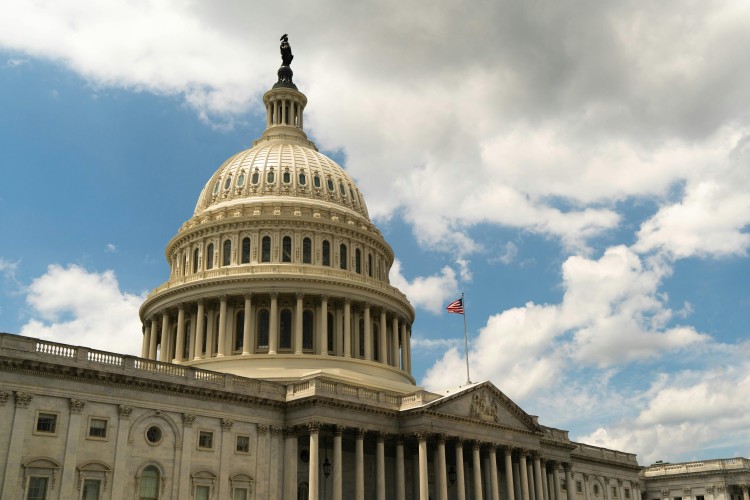Aimed Awareness: Purposeful Strategies for Sharing the Message of Human Trafficking Awareness Month 2019

This January is recognized nationally as Human Trafficking Awareness Month 2019. Over the last few weeks, you have likely seen more news coverage or events aimed at discussing this form of abuse and exploitation. This presents a unique opportunity to engage more community members in meaningful conversation. However, as an organization focused on anti-trafficking work year-round we understand that increased awareness is not always positive or helpful.
In fact, over the years, we have seen a focus on awareness lead to negative consequences for survivors—the very people we hope to serve through our efforts (Countryman-Roswurm, 2017; Countryman-Roswurm & Patton Brackin, 2017; Countryman-Roswurm, 2015; Countryman-Roswurm, 2014). Increased identification without additional services has led to the criminalization of OUR young people subjected to trafficking (Countryman-Roswurm, 2017). Increased awareness has led to the formation of new not-for-profits and, at times, a duplication of services that further strain community resources (Countryman-Roswurm, 2015).
We know that this struggle for intentional, responsible awareness is a year-round effort. As such, we wanted to provide a few reminders to assist in purposeful awareness:
1. Move past the two-minute sound bite. Although there is constant competition for attention and resources, we still have an obligation to avoid sensationalizing our depiction of human trafficking. Using fear or sex to draw in an audience will leave the community with a skewed perception and may lead to missed opportunities for intervention. As we train and work with communities across the country, we find that there are still misperceptions about those subjected to trafficking. Often, this allows buyers to continue their behavior “under the radar,” while survivors may be labeled as criminals when they do not meet our expectation of a “victim.”
2. Connect awareness efforts to your everyday work. Trafficking can look a million different ways, but direct service professionals are often tuned into the trends within their own community. Effective awareness efforts educate the public on:
- What does trafficking look like in our community?
- What resources are available to survivors? Where can I refer survivors/those at-risk?
- What barriers do survivors face in our community?
- Who are the youth that are at-risk for trafficking and how can the community work to prevent this abuse and exploitation? What are ways the community can work to address the systemic issues of classism, racism, sexism, etc. that perpetuate the cycles of trafficking?
3. Have a plan to engage community members in action. While awareness is great, awareness alone will not improve services for survivors or help prevent trafficking. As you bring awareness to the topic, provide a few outlets for individuals to connect to anti-trafficking work. This will ensure individuals don’t lose interest after January and remain connected to anti-trafficking efforts year-round. Know, too, that serving survivors is only one part of the equation. There are opportunities for community members to engage in efforts aimed at curbing demand for commercial sex and/or preventing trafficking by engaging with youth who are more vulnerable and at higher risk.
4. Educate the community on the context in which trafficking occurs. Trafficking is a complex issue intertwined and influenced by other complex issues. Don’t be afraid to engage community members in conversations around child welfare, poverty, racism, transphobia, ableism, heteronormative biases, etc. These can be intimidating conversations, but we must address systems of inequality if our goal is to end this form of abuse and exploitation.
5. Don’t sacrifice a survivor’s privacy for awareness. We recognize that sharing one’s story can be a part of the healing process, but far too often we see survivors coerced or pressured into sharing before they are ready. Agencies should strive to be more creative—how can you speak to people’s hearts without re-exploiting survivors? Be mindful of both asking survivors to speak, as well as sharing stories “anonymously.” Awareness efforts should emphasize survivors’ ownership over their stories and experiences.
January is always an exciting time for us, and we understand that additional platforms, such as Human Trafficking Awareness Month, present a unique opportunity to engage the public in our work. While it can be easy to get lost in wanting to create a flashy campaign or event, it is important that awareness efforts maintain their substance. We all have a role in responsibly educating our community with the ultimate goal of improving circumstances for those at-risk of or subjugated to trafficking.
For more specific information on the potentially harmful effects of unintentional awareness efforts as well as pointed ways on how to be more intentional in your awareness efforts, see our articles below:
- Countryman-Roswurm, K. (2017, September 1). Justice for Hope. Retrieved from http://combatinghumantrafficking.org/Blog.aspx?dyzm%2bq7GB9bLkMfH4yNqkA5IK28lrVHK6FCDiLtkN%2bctyF%2bm4LzFyoFRkH9dxFB7
- Countryman-Roswurm, K., & Patton Brackin, B. (2017). Awareness Without Re-Exploitation: Empowering Approaches to Sharing the Message About Human Trafficking. Journal of Human Trafficking, 1-8.
- Countryman-Roswurm, K. (2015). Rise Unite, Support: Doing No Harm in the Anti-Trafficking Movement. Slavery Today, 2(1)1-22.
- Countryman-Roswurm, K. (2014). Who’s Pimpin’ Now?: How Our System is Exploiting the Exploited (pp. 51-56). In R. Ross (2015). Girls in Justice. Santa Barbara, CA: Image of Justice.



